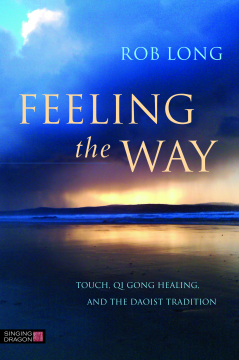
Additional Information
Book Details
Abstract
This practical, down-to-earth guide offers the means for you to awaken your healing hands. Focussing on the use of hand sensitivity and energy in healing, the guide introduces methods to rapidly sharpen your latent skills and increase your confidence when feeling and working with Qi. Based on a combination of clinical examples, Daoist philosophy, and detailed 'how-to' instructions, the author shows you how to develop your ability to work energetically with your hands, providing an invaluable, powerful tool for subtle diagnosis and healing work that can supplement other methods.
Develop your hand sensitivity and awaken your healing hands with the help of this practical guide written by practitioner Rob Long. Inspired by Daoist philosophy and concepts of qi, the book features illustrations and instructive techniques for working energetically with your hands, allowing you to develop refined bodywork methods.
Massage & Bodywork Magazine
Rob Long is an experienced Acupuncturist, Tui Na therapist and Qi Gong healer and teacher. Based in Cornwall, Rob has been offering clients and students clinical work and teaching based on in-depth knowledge of traditional Daoist skills for two decades.
In this short and easy-to-read book, Rob Long peels away most of the theoretical obscuration that conceals the Daoist heart of Traditional Chinese Medicine and shows how to combine the key experiences discovered in the practice of Qigong and Neigong with that of acupuncture in healing.
Carola Beresford-Cooke, author of Shiatsu Theory and Practice
Table of Contents
| Section Title | Page | Action | Price |
|---|---|---|---|
| Feeling the Way - Touch, Qi Gong, Healing, and the Daoist Tradition by Rob Long | 3 | ||
| Acknowledgements | 9 | ||
| Disclaimer | 10 | ||
| Preface | 11 | ||
| Introduction | 13 | ||
| How Qi Sensitivity Healing came about | 17 | ||
| Everybody is a healer | 19 | ||
| Chapter 1 - What Is a Daoist? | 22 | ||
| The practical and mystical become one | 23 | ||
| Understanding the world through personal experience | 24 | ||
| Limitations of language | 29 | ||
| Chapter 2 - Breathe! | 31 | ||
| Breathing as a technology | 33 | ||
| The ancient Chinese paradigm | 36 | ||
| Breathing and the Dan Tien | 39 | ||
| Chapter 3 - The Basic Mechanics of Healing | 43 | ||
| Subtle anatomy | 45 | ||
| Deeper flows | 46 | ||
| The ‘trinity’ | 47 | ||
| Energy gates | 49 | ||
| Chapter 4 - Intention Is Everything | 56 | ||
| The ‘monkey mind’ | 57 | ||
| Two very different approaches | 60 | ||
| Chapter 5 - Hands Off! | 65 | ||
| The structure and functions of the extended energy field | 69 | ||
| The extended energy field and intuition | 71 | ||
| Chapter 6 - Going Deeper | 76 | ||
| Technique versus ‘feel’ | 76 | ||
| Wu-Wei – the interface between action and non-action | 78 | ||
| Zu Ran | 79 | ||
| What you see is what you get: uses of visualization | 80 | ||
| The mind: searchlight or daylight? | 81 | ||
| Chapter 7 - QSH Techniques PArt 1: Turning Theory into Therapy | 85 | ||
| De Qi: what it is and how to achieve it | 87 | ||
| A few thoughts about hand direction… | 95 | ||
| Chapter 8 - QSH Techniques Part 2: Going Inside | 96 | ||
| Healing hands or healing hand? | 96 | ||
| Engaging with the meridian system | 97 | ||
| Encouraging Qi to ascend or descend | 104 | ||
| Chapter 9 - Integration | 112 | ||
| Applying Qi Sensitivity Healing in the clinic | 112 | ||
| Vulnerable patients | 115 | ||
| Some final thoughts… | 123 | ||
| References | 124 | ||
| Further Reading | 125 | ||
| Appendix | 128 | ||
| Acupoints | 128 | ||
| Index | 130 |
